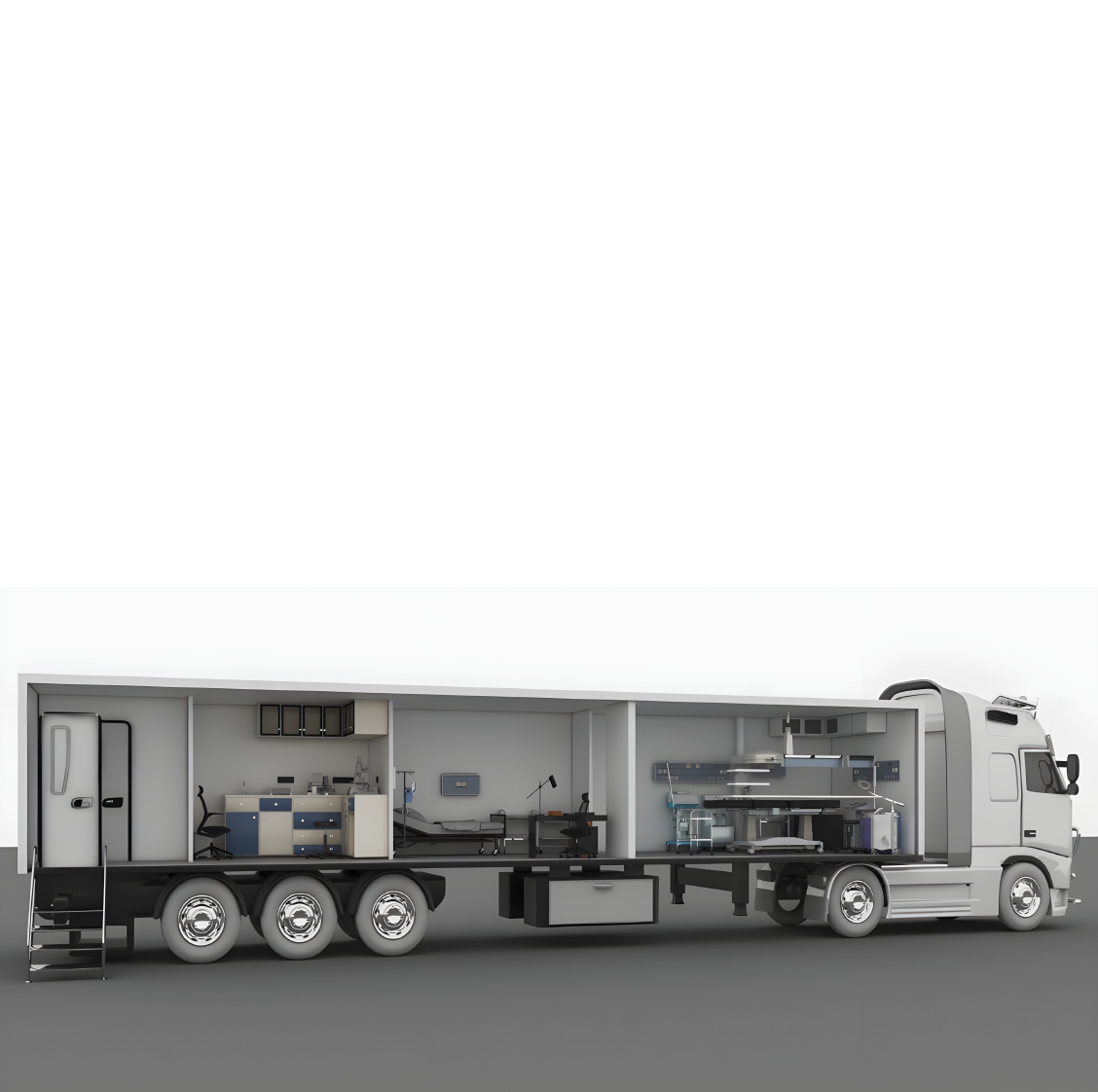1. Vehicle Design
- Built on a 40ft container-sized unit placed on a truck 40ft semi-trailer.
- Towed by a tractor head/prime mover for mobility and stability.
- Designed to facilitate essential maternal health services.
- Equipped with climate control systems to maintain a sterile and comfortable environment.
2. Driver Compartment (Separate)
- A dedicated area for the driver, ensuring safe and focused operation of the vehicle.
- Separated from the medical areas to maintain hygiene and minimize distractions.
3. Operation/Surgical Room
- A fully equipped, sterile environment for performing caesarean sections and other essential maternal surgeries.
- Includes surgical instruments, anesthesia machines, monitors, and sterilization equipment.
- Designed to meet medical standards for maternal health and surgical safety.
4. Recovery/Consultation/Office Area
- A multi-functional space for postnatal recovery, patient consultations, and administrative work.
- Equipped with seating, maternal health records (EHR) systems, and neonatal care equipment.
- Allows for private patient discussions and post-operative monitoring.
5. Laboratory/Storage
- A dedicated area for diagnostic testing related to maternal and neonatal health.
- Includes portable lab equipment for blood tests, infection screenings, and fetal monitoring.
- Organized storage for surgical tools, medications, and emergency obstetric supplies.
6. Shower & Toilet
- A compact but functional bathroom facility for mothers, newborns, and medical staff.
- Ensures hygiene and convenience during prolonged maternal care services.
7. Medical Equipment
- Portable surgical instruments and tools for caesarean sections and normal deliveries.
- Diagnostic tools like ultrasound, fetal heart monitors, and portable labs.
- Emergency medical supplies and medications for maternal and neonatal care.


